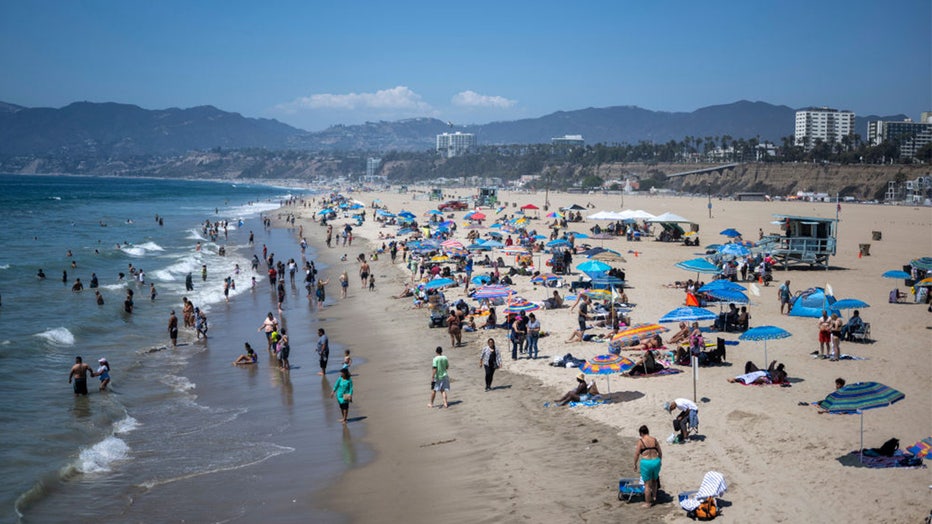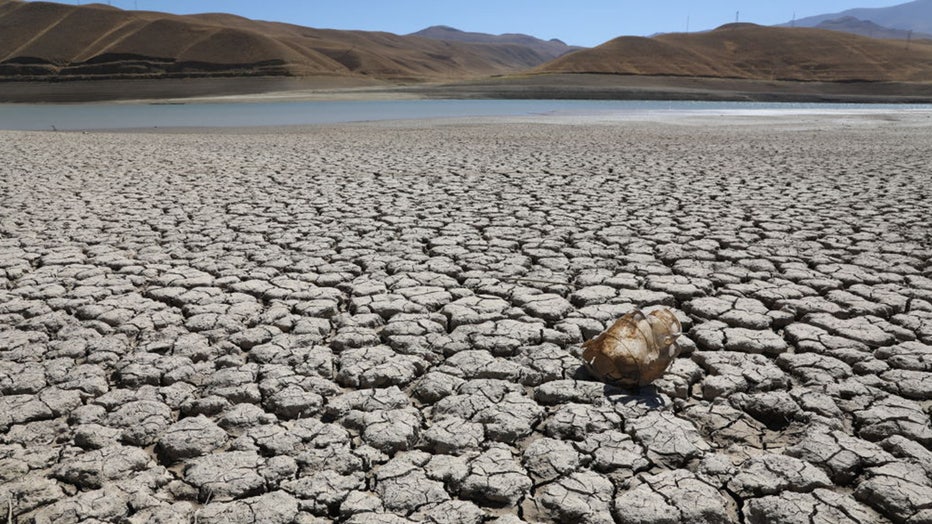2022 among warmest years on record; experts warn warmer temps to come

UN climate report says world to get sicker, more dangerous in next 18 years
A U.N. panel published a new report on Feb. 28, 2022, summarizing the latest information on global warming and its effect on people.
DENVER - Earth’s fever persisted last year, not quite spiking to a record high but still in the top five or six warmest on record, government agencies reported Thursday.
But expect record-shattering hot years soon, likely in the next couple years because of "relentless" climate change from the burning of coal, oil and gas, U.S. government scientists said.
Despite a La Nina, a cooling of the equatorial Pacific that slightly reduces global average temperatures, the U.S. National Oceanic and Atmospheric Administration calculates 2022’s global average temperature was 58.55 degrees (14.76 degrees Celsius), ranking sixth hottest on record. NOAA doesn’t include the polar regions because of data concerns, but soon will.
If the Arctic -- which is warming three to four times faster than the rest of the world -- and Antarctic are factored in, NOAA said it would be fifth warmest. NASA, which has long factored the Arctic in its global calculations, said 2022 is essentially tied for fifth warmest with 2015. Four other scientific agencies or science groups around the world put the year as either fifth or sixth hottest.
NOAA and NASA records go back to 1880.

FILE - Peole enjoy the weather on the beach in Santa Monica Sept. 2, 2022. (Hans Gutknecht/MediaNews Group/Los Angeles Daily News via Getty Images)
NASA Administrator Bill Nelson said global temperature is "pretty alarming ... What we’re seeing is our warming climate, it’s warning all of us. Forest fires are intensifying. Hurricanes are getting stronger. Droughts are wreaking havoc. Sea levels are rising. Extreme weather patterns threaten our well-being across this planet."
Berkeley Earth, a nonprofit group of independent scientists, said it was the fifth warmest on record and noted that for 28 countries it was the hottest year on record, including China, the United Kingdom, Spain, France, Germany and New Zealand.
Another group, whose satellite-based calculations tend to run cooler than other science teams, said it was the seventh hottest year.
Last year was slightly toastier than 2021, but overall the science teams say the big issue is that the last eight years, from 2015 on, have been a step above the higher temperatures the globe had been going through. All eight years are more than 1.8 degrees (1 degree Celsius) warmer than pre-industrial times, NOAA and NASA said. Last year was 2 degrees (1.1 degrees Celsius) warmer than the mid-19th century, NASA said.
"The last eight years have clearly been warmer than the years before," said NOAA analysis branch chief Russ Vose.

FILE - A view of the almost dried up Zernek Dam due to the heat and excessive evaporation in the last months in Gurpinar district of Van, Turkiye on Sept. 28, 2022. (Necat Hazar/Anadolu Agency via Getty Images)
In a human body an extra 2 degrees Fahrenheit is considered a fever, but University of Oklahoma meteorology professor Renee McPherson, who wasn’t part of any of the study teams, said the global warmth is actually worse than the equivalent of a planetary fever because fevers can be treated to go down quickly.
"You can’t take a pill for it so the fixes aren’t easy," McPherson said. "It’s more what you consider a chronic illness like cancer."
Like a fever, "every tenth of a degree matters and things break down and that’s what we’re seeing," Climate Central Chief Meteorologist Bernadette Woods Placky.
The likelihood of the world shooting past the 1.5 degrees Celsius (2.7 degrees Fahrenheit) warming threshold that the world adopted in 2015 is increasing with every year, said the World Meteorological Organization. The United Nations weather agency said the last 10 years averaged 1.14 degrees Celsius warmer than pre-industrial times. Vose said there's a 50-50 chance of hitting 1.5 degrees Celsius temporarily in the 2020s.
Vose and NASA Goddard Institute of Space Studies Director Gavin Schmidt both said there are hints of an acceleration of warming but the data isn’t quite solid enough to be sure. But the overall trend of warming is rock solid, they said.
"Since the mid-1970s you’ve seen this relentless increase in temperature and that’s totally robust to all the different methodologies," Schmidt said.

FILE - Cornfield damaged by drought in Stouffville, Ontario, Canada, on Sept, 30, 2022. (Creative Touch Imaging Ltd./NurPhoto via Getty Images)
The La Nina, a natural process that alters weather worldwide, is in its third straight year. Schmidt calculated that last year the La Nina cooled the overall temperature by about a tenth of a degree (.06 degrees Celsius) and that last year was the hottest La Nina year on record.
"The La Nina years of today aren’t the La Nina years of yesterday," said North Carolina state climatologist Kathie Dello. "Historically, we could rely on La Nina turning down the global thermostat. Now, heat-trapping gases are keeping the temperature cranked up, and handing us another top-10 warmest year on record."
With La Nina likely dissipating and a possible El Nino on the way — which adds to warming — Schmidt said this year will likely be warmer than 2022. And next year, he said, watch out if there’s an El Nino.
"That would suggest that 2024 would be the record warmest year by quite a large amount," Schmidt said in an interview with The Associated Press.
Scientists say about 90% of the heat trapped by greenhouse gases goes into the upper 6,561 feet of the ocean (2000 meters), and figures released Wednesday show 2022 was another record year for ocean heat.
"There’s a real good connection between the patterns of ocean warming, the stratification, and then the weather that we experience in our daily lives on land," including stronger hurricanes and rising seas, said study co-author John Abraham of the University of St. Thomas.
In the United States, global warming first grabbed headlines when Schmidt’s predecessor, climate scientist James Hansen, testified about worsening warming in 1988. That year would go on to be the record warmest at the time.
Now, 1988 is the 28th hottest year on record.
The last year that the Earth was cooler than the 20th century average was 1976, according to NOAA.
But scientists say average temperatures aren’t what really affects people. What hits and hurts people are how the warming makes extreme weather events, such as heat waves, floods, droughts and storms worse or more frequent or both, they said.
"These trends should concern everyone," said Cornell University climate scientist Natalie Mahowald, who wasn’t part of the study teams.
WMO Secretary-General Petteri Taalas said in 2022 those extremes "undermined health, food, energy and water security and infrastructure. Large areas of Pakistan were flooded, with major economic losses and human casualties. Record breaking heat waves have been observed in China, Europe, North and South America. The long-lasting drought in the Horn of Africa threatens a humanitarian catastrophe."
___
Follow AP’s climate and environment coverage at https://apnews.com/hub/climate-and-environment
___
Follow Seth Borenstein on Twitter at @borenbears
___
Associated Press climate and environmental coverage receives support from several private foundations. See more about AP’s climate initiative here. The AP is solely responsible for all content.

